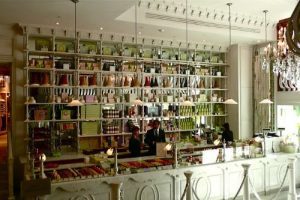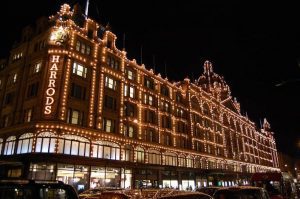Retailer Spotlight – Harrods
Harrods is Britain’s largest department store. With a history stretching back to the Victorian era, it has become a global tourist attraction. Harrods has 330 departments and 100,000 square metres of retail space in its flagship Knightsbridge store.
Charles Henry Harrod founded the store in 1824. At the beginning, it was a draper’s store but the product range evolved over time. Harrods moved to its current site in 1849. It was around this time that Harrod’s son Charles Digby Harrod became involved in the store. In the late nineteenth century, fire destroyed the original Harrods building. The store was rebuilt as a larger, five-storey building. Both father and son focused on expanding the store and increasing the scope of its product range.
Harrods brought in Richard Burbidge as a director in 1891. In subsequent years, he would be central to the progress of the business. Burbidge purchased much of the land surrounding the new store to enable future expansion. As he became more important to Harrods, he aimed to shift the company’s attention.
Under Burbidge, Harrods began to focus on targeting upscale customers and developing the store’s premium reputation. To this end, he promoted innovative initiatives. Among these, Harrods became the first store in England to contain an escalator in 1898. At the top, staff provided anxious customers with free cognac to calm their nerves!
The first half of twentieth century was a period of success for Harrods. During this period, they established themselves as a luxury brand. Reflecting this, Harrods received several royal warrants. From 1938, they supplied the royal family with household goods and they would later serve as outfitter to the Duke of Edinburgh.
Scottish department store House of Fraser acquired Harrods in 1959. The group’s owner Hugh Fraser saw the store as the ‘jewel in the crown’ of a string of department store acquisitions. By the 1970s though, Harrods was struggling to maintain their dominant position. Changing consumer habits had diminished the prospects for a luxury department store.
Further complicating the issue, Harrods was the subject of a public battle. Controversial businessman Tiny Rowland attempted to take control of House of Fraser. Due to both internal and external opposition, he was unsuccessful. Instead the Fayed family bought the group and sought to reverse the fortunes of Harrods.
The Fayeds oversaw a major renovation that increased the store’s available retail space. They also instituted a dress code for all visitors that banned clothing such as ripped jeans and Bermuda shorts. Although somewhat less strict, it remains in place today.
Under the Fayed family, Harrods was separated from the rest of the House of Fraser group. Focus turned to Harrods’ business outside of their flagship store. They opened smaller stores in a handful of major airports including London Heathrow. Despite publicly saying they wouldn’t do so, the Fayeds sold Harrods to Qatar’s sovereign wealth fund in 2010.

Photo by Herry Lawford on Flickr
Harrods remains one of London’s most iconic buildings and a major global tourist attraction. During the Christmas period, the store attracts around 300,000 visitors every day. And the name Harrods remains synonymous with luxury.
If you think that your brand would be suitable for Harrods’ premium product range, why not contact Unlock EMEA? We have helped many brands secure placement in Harrods and yours could be the next.


